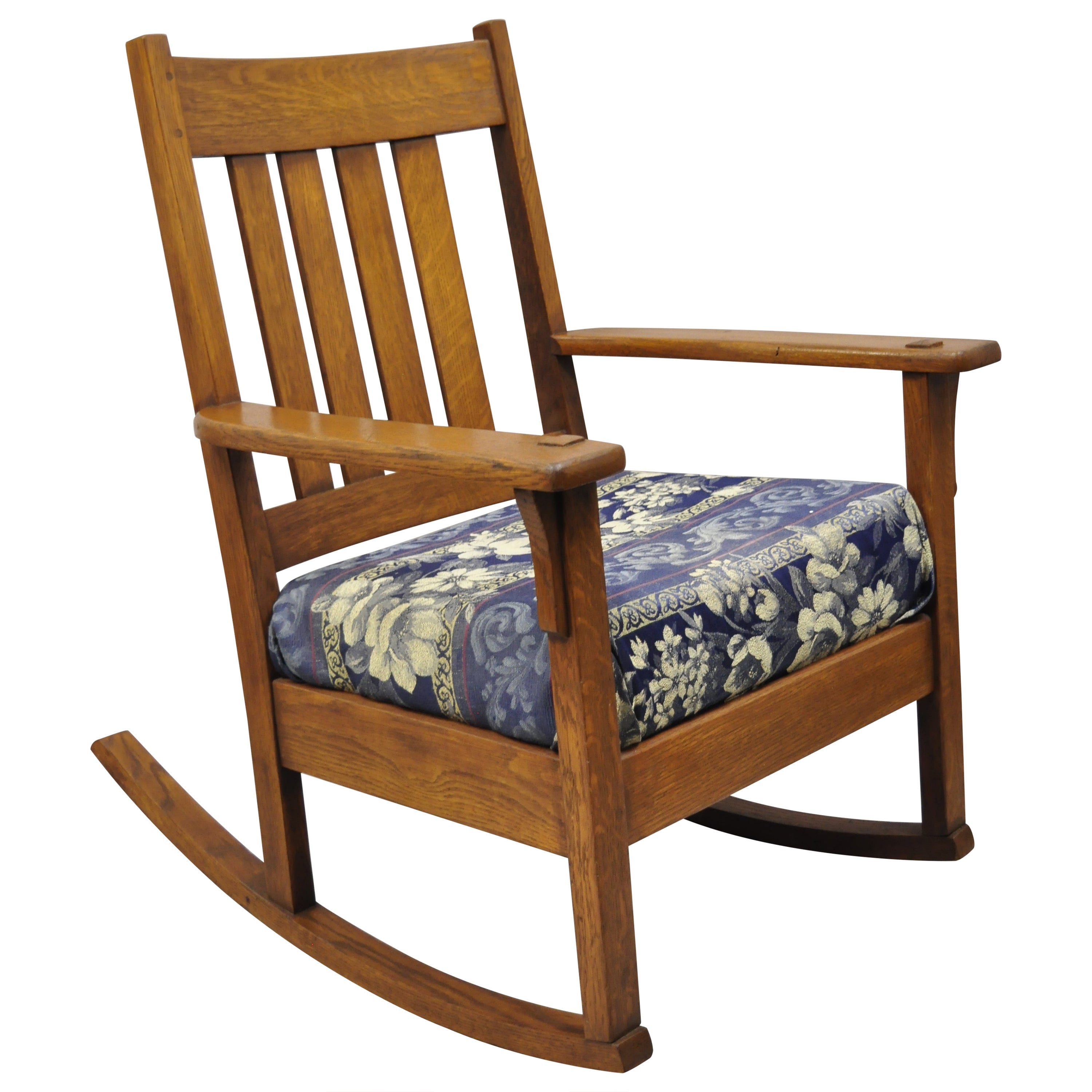History and Legacy of Charles Limbert Rocking Chairs

Charles Limbert, a prominent figure in the American Arts and Crafts movement, left an enduring legacy through his exquisitely crafted furniture, particularly his rocking chairs. Limbert’s rocking chairs, renowned for their exceptional quality, craftsmanship, and aesthetic appeal, continue to be highly sought after by collectors and enthusiasts alike.
Origins and the Arts and Crafts Movement
Charles Limbert’s furniture-making journey began in the late 19th century, coinciding with the rise of the Arts and Crafts movement. This movement, a reaction against the industrialization and mass production of the time, emphasized handcrafted objects, natural materials, and traditional techniques. Limbert, deeply influenced by the movement’s principles, established his furniture company in Grand Rapids, Michigan, in 1898.
Design Principles and Techniques
Limbert’s rocking chairs embody the core values of the Arts and Crafts movement. He meticulously selected high-quality materials, including hardwoods like oak, cherry, and walnut, known for their durability and natural beauty. Limbert’s designs were characterized by simplicity, functionality, and a focus on craftsmanship. He employed traditional woodworking techniques, such as mortise-and-tenon joinery, to create sturdy and enduring pieces.
Historical Anecdotes and Stories
One fascinating anecdote about Limbert’s rocking chairs involves a commission for a prominent architect, Frank Lloyd Wright. Wright, known for his innovative designs, was impressed by Limbert’s craftsmanship and commissioned a set of rocking chairs for his own home. This collaboration solidified Limbert’s reputation as a leading furniture maker of the Arts and Crafts era.
Timeline of Charles Limbert and His Rocking Chairs, Charles limbert rocking chair
- 1898: Charles Limbert establishes his furniture company in Grand Rapids, Michigan.
- Early 1900s: Limbert’s rocking chairs gain popularity, becoming synonymous with the Arts and Crafts movement.
- 1910s: Limbert’s company expands, producing a wide range of furniture, including rocking chairs, tables, and chairs.
- 1920s: The company faces financial difficulties and eventually closes its doors.
- Present Day: Limbert’s rocking chairs remain highly sought after by collectors and enthusiasts, commanding significant value in the antique market.
Distinctive Features and Characteristics: Charles Limbert Rocking Chair

Charles Limbert rocking chairs stand out for their exceptional craftsmanship, distinctive design elements, and use of high-quality materials. Limbert’s rocking chairs embody the Arts and Crafts movement’s emphasis on functionality, simplicity, and natural materials.
Design Motifs and Craftsmanship
Limbert’s rocking chairs were characterized by their simple, elegant lines and emphasis on natural wood grain. The chairs often featured hand-carved details, such as turned spindles, and decorative elements like inlays or wood carvings. Limbert’s furniture was designed to be both functional and aesthetically pleasing, reflecting the Arts and Crafts movement’s emphasis on craftsmanship and the beauty of natural materials.
Comparison with Other Furniture Makers
Limbert’s rocking chairs were distinct from those of other prominent furniture makers of the era, such as Gustav Stickley and Mission Revival furniture makers. While Stickley’s furniture was known for its sturdy construction and use of heavy, dark wood, Limbert’s pieces were often lighter and more refined. Limbert’s designs also incorporated a wider range of woods, including cherry, maple, and oak, and featured more delicate detailing. In contrast to Mission Revival furniture, which often emphasized geometric forms, Limbert’s designs incorporated more organic curves and flowing lines.
Models of Limbert Rocking Chairs
Limbert produced a variety of rocking chair models, each with its own unique features and dimensions. The following table provides a brief overview of some of the most popular models:
| Model | Features | Dimensions |
|---|---|---|
| “Mission” Rocking Chair | Simple, sturdy design with a high back and wide arms. | 38″ wide x 36″ deep x 42″ high |
| “Arts & Crafts” Rocking Chair | Features a more elaborate design with turned spindles and decorative inlays. | 36″ wide x 34″ deep x 40″ high |
| “Windsor” Rocking Chair | Inspired by traditional Windsor chairs, this model features a curved back and spindle-shaped legs. | 34″ wide x 32″ deep x 38″ high |
Materials and Craftsmanship
Limbert’s rocking chairs were made using high-quality materials, including solid wood, hand-forged hardware, and durable finishes. Limbert’s artisans carefully selected each piece of wood, ensuring that it was free of defects and had a beautiful grain pattern. They then used traditional woodworking techniques to create each chair, taking great care to ensure that every joint was perfectly fitted and every detail was meticulously crafted. Limbert’s rocking chairs were designed to be both beautiful and long-lasting, and they have stood the test of time as testament to the company’s commitment to quality.
Yo, Charles Limbert rocking chairs are like, totally classic, right? But if you wanna step up your game, check out a birdseye maple rocking chair. The grain on those bad boys is insane, like nature’s own artwork. So yeah, Limbert’s cool, but if you want something that’ll make your chill spot next level, go for the birdseye maple.
Yo, ever heard of a Charles Limbert rocking chair? They’re like the OG of chill vibes, man. Totally different from the L Hitchcock rocking chair which is all about suspense and tension. The Limbert chair, it’s all about kicking back and relaxing, you know?
Like a classic movie marathon with your crew.
